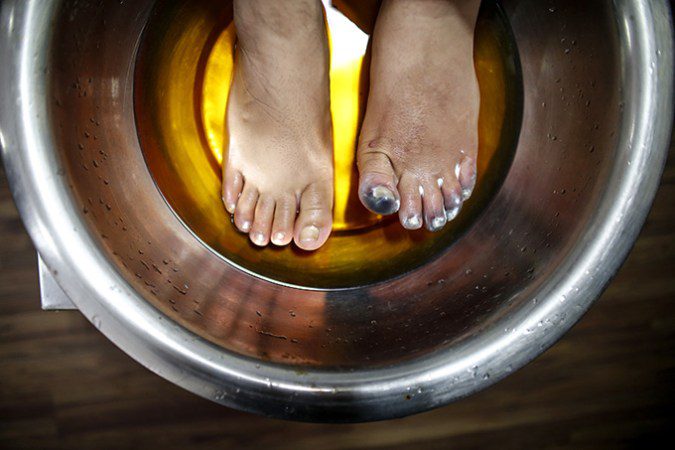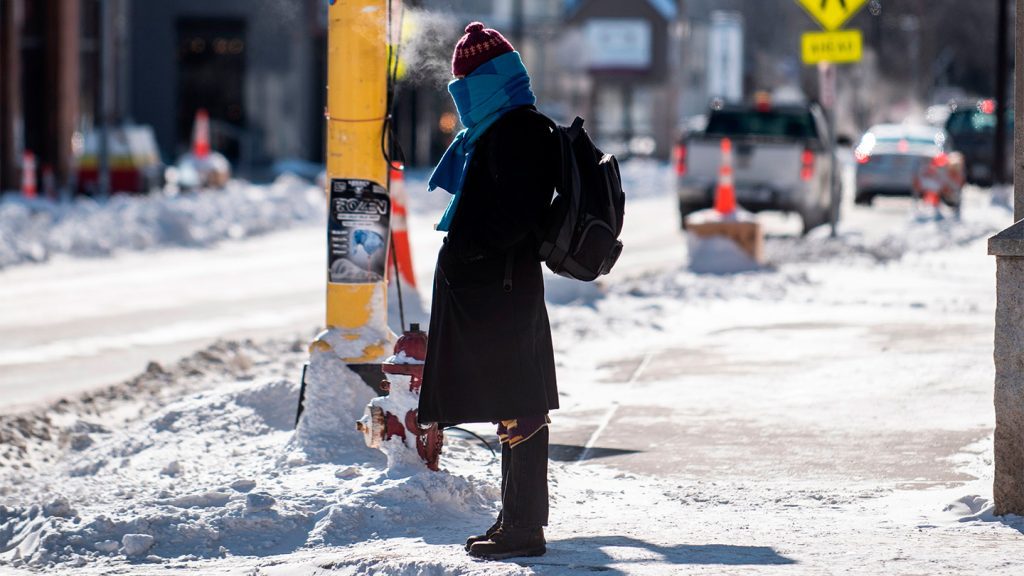In the most severe cases, frostbite can cause the tissues in fingers, toes, noses and other extremities to die and require amputation. Now doctors in the United States have a method to save patients from these life-altering effects.
In February, the U.S. Food and Drug Administration gave the green light to the first medication in the country made for treating severe frostbite. In a clinical trial, the medication, iloprost, significantly reduced amputations in almost all of the frostbite patients who received it.
Even though frostbite affects a relatively small number of people in the United States — a few thousand annually — it is a major concern for people who must spend a lot of time outside in the cold, such as mountain climbers, people in the military and people without housing.
A man-made medication originally created in Germany in 1980s, iloprost, also known as Aurlumyn, is administered through injection. It functions as a vasodilator, meaning it widens blood vessels, enhances blood flow and prevents the risk of blood clotting. It was mainly used to treat Raynaud’s disease, a disorder that causes blood vessels in the fingers and toes to narrow, as well as to treat blood pressure–related illnesses.
A study published in 1994 was the first to check if the medication may also be able to open up jammed blood vessels as a result of frostbite. It was tested in five patients, successfully recovering their frostbitten digits in all cases.
The medication subsequently exhibited promising results in studies conducted in England, France and Nepal. In the clinical trial mentioned by the FDA in its approval of iloprost, patients rescued from high altitudes were randomly assigned to treatment with either buflomedil (another vasodilator), iloprost or iloprost plus a drug that breaks down blood clots. Out of the 47 patients treated over 12 years, none of the 16 patients that received iloprost alone had to have digits amputated, researchers reported in 2011 in the New England Journal of Medicine. In comparison, nine of 15 patients in the buflomedil group needed amputations as did three of 16 patients in the iloprost combination group.
Iloprost has already been an approved treatment for frostbite for years in a number of European countries and other parts of the world. Science News talked with Chris Imray, a vascular surgeon at University Hospitals Coventry & Warwickshire in England who has been treating patients with this medication for more than a decade, about what frostbite does to the body, how the medication works and what it will mean for patient treatment in the United States. The interview has been edited for length and clarity.
SN: What happens in the body during frostbite?
Imray: Frostbite is a thermal injury that affects [the] hands, feet, nose, ears and occasionally external genitalia after a few hours of cold exposure. When the temperature of the tissue drops to around zero degree Celsius, the blood flow through the tissue slows down. Then you get thrombosis, clots forming within the blood vessels, which subsequently leads to loss of oxygen delivery to the tissue. Over a period of time, you then get gangrene and the tissue dies.
SN: How did scientists realize that targeting blood clotting can be useful in frostbite treatment?
Imray: If a damaged tissue has poor blood supply due to a thermal injury, one might try to warm the tissue. However, warming the tissue without restoring the oxygen delivery can speed up deterioration.
It has been known for a while that restoring blood flow quickly can clear the clots in small blood vessels and deliver oxygen to the tissues, as seen in situations like stroke or acute coronary syndromes. Thrombolytic agents were used for such treatment, but they could lead to increased bleeding in accident patients with soft tissue or bony injuries. Iloprost, on the other hand, acts as a vasodilator rather than a lytic agent on the clot, offering a different approach.

SN: How has iloprost changed treatment of frostbite?
Imray: Previously, a procedure called sympathectomy was performed to open up blood vessels to the hands or feet by cutting the sympathetic nerves. Iloprost seems to have a similar effect by causing blood vessels to vasodilate, eliminating the need for permanent nerve damage.
SN: How is iloprost administered?
Imray: The drug is administered intravenously and circulates throughout the body. Typically, the infusion rate is started at a low dose and gradually increased until the patient experiences side effects such as facial flushing, high heart rate, or low blood pressure. The dosage is then slightly reduced to alleviate the symptoms. This process is repeated for around five days, with imaging tests used to assess blood supply improvement to the tissues. Surgeons then manage the nearly dead tissues that have been revived. The overall result is a remarkable success rate in saving limbs and digits.
SN: How does iloprost work?
There are several suggested mechanisms for how it works, including vasodilation, a slight effect on clotting, and an alteration in the ability of red blood cells to pass through small vessels.
SN: What timing is crucial for treating frostbite?
Imray: Different tissues have varying metabolic rates, with the brain having a high metabolic rate and therefore a short six-hour window for addressing blood clots in a stroke. The heart has a slightly longer window, but permanent tissue damage can occur if treatment is delayed.
The optimal timing for using iloprost after a frostbite injury is not fully understood for tissues in the hands, feet, and muscles. While it was initially thought that 24 hours was the maximum time, there have been cases of successful treatment up to five days after injury. However, the effectiveness diminishes the longer treatment is delayed.
SNWho will benefit the most from this new approval?
Imray: We’ve had several well-known climbers who got frostbite and were told nothing could be done. As a result, they lost tissue. So, we're trying to find medical facilities near large mountains where iloprost can be administered, so that if you get injured, you can be taken there as soon as possible.
Frostbite also affects homeless individuals. Unfortunately, they don't receive the same attention as the high-profile climbers, but they can suffer serious frostbite injuries and end up needing life-altering amputations.
The approval of iloprost will greatly benefit people at risk of losing limbs. I’m happy that the FDA has approved it, but it took them a long time to do so.



